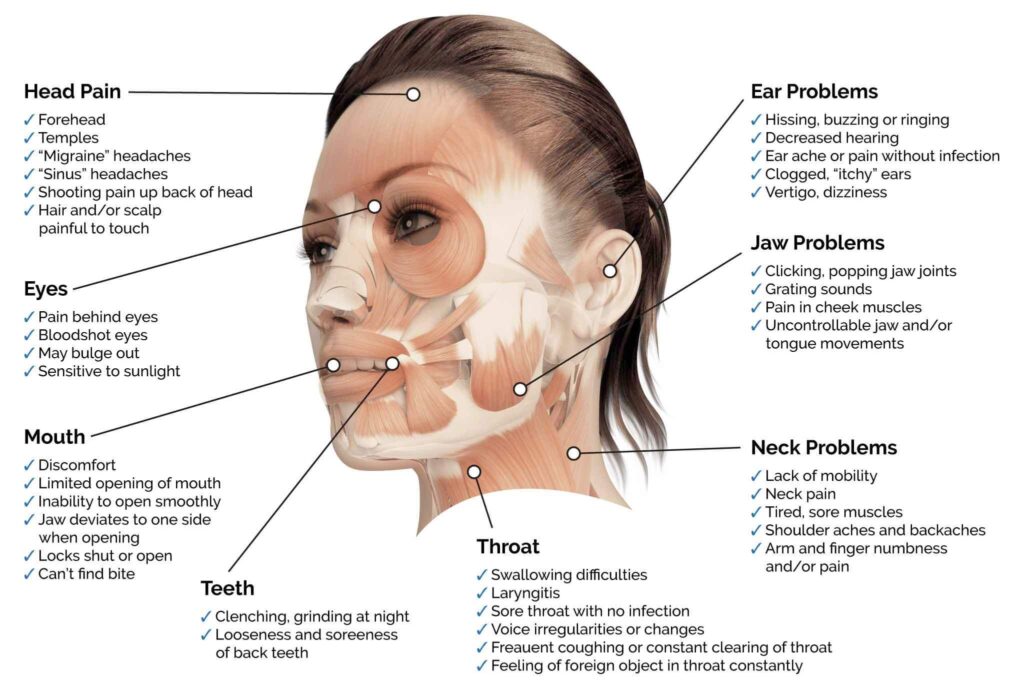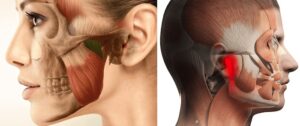TMD Symptoms & Treatment
What are temporomandibular disorders (TMD) and orofacial pain conditions?
A typical temporomandibular disorder (TMD) may involve the temporomandibular joint (TMJ) or any of its surrounding soft tissues. Orofacial pain refers to any condition that manifests with pain in the head. Common symptoms include:
- Jaw Pain
- Jaw Noise
- Jaw Locking
- Limited Jaw Opening
- Atypical Tooth Pain
- Ear Pain
- Tinnitus
- Headache
- Neckpain

What can be done?
Clinicians trained in the treatment of TMD, orofacial pain, oral medicine and dental sleep medicine are available for evaluation and treatment.

They include dentists, physical therapists, health psychologists, and other physician specialists. Some ways you can begin to reduce jaw pain are to stop gum chewing, eat foods that require less chewing, limit caffeine, and avoid jaw activities that increase jaw tension or noise. When eating, try to chew on both sides of your mouth simultaneously. Avoid jaw clenching and leaning on your jaw. You may find that heat or cold applied to the jaw(s) is helpful. Over the counter pain remedies may also help decrease jaw discomfort. These may offer short-term relief until you can be evaluated.

